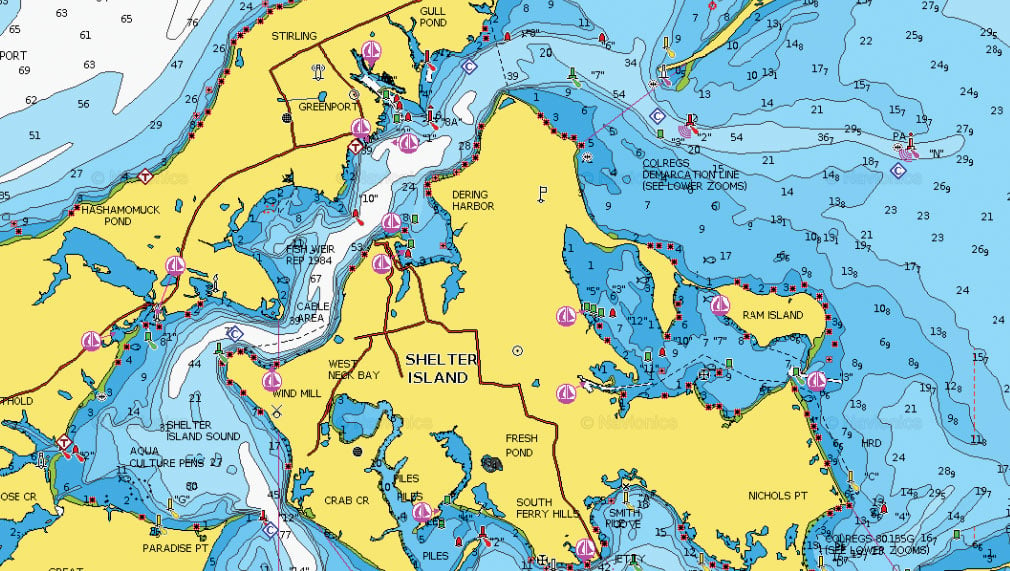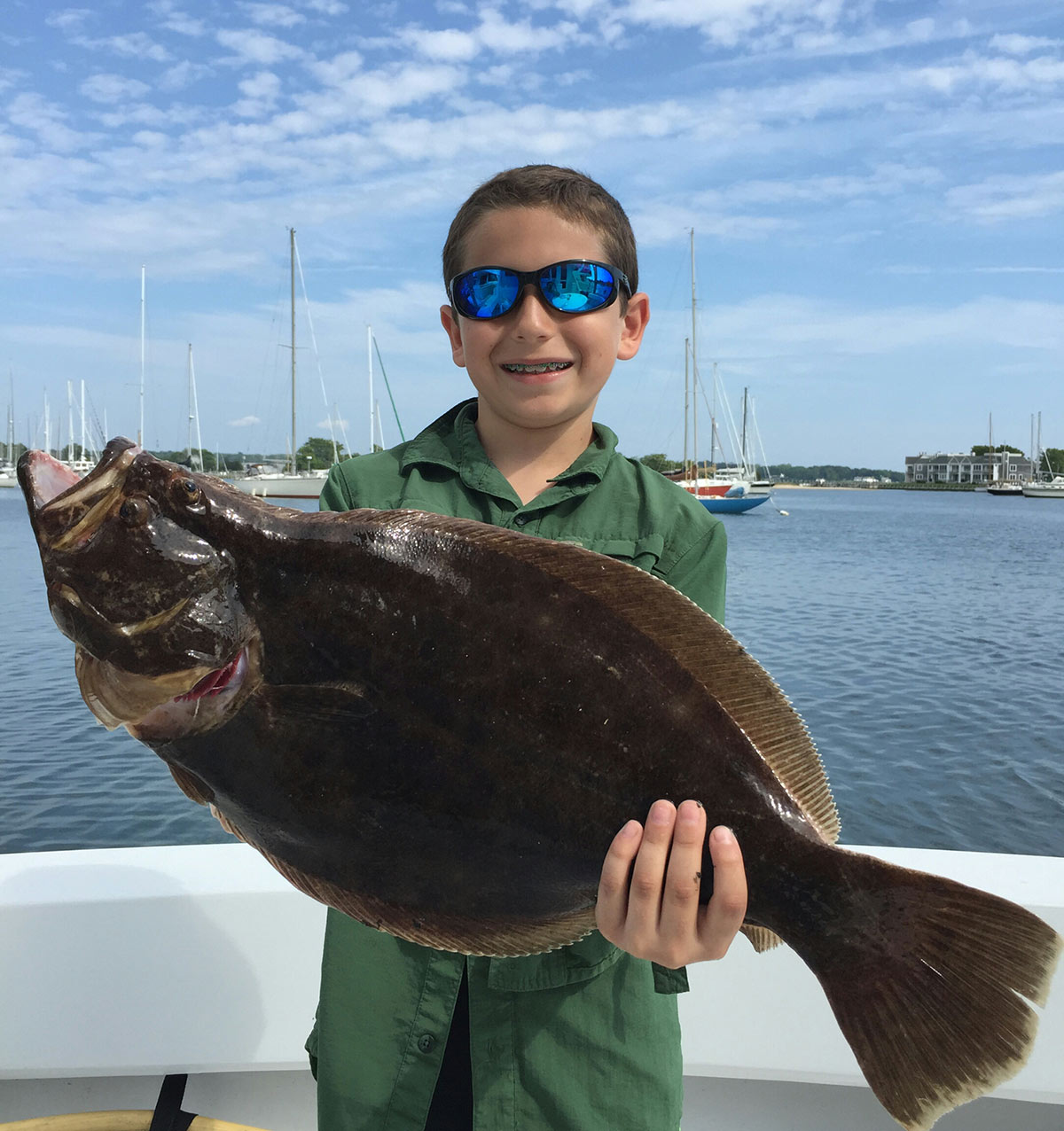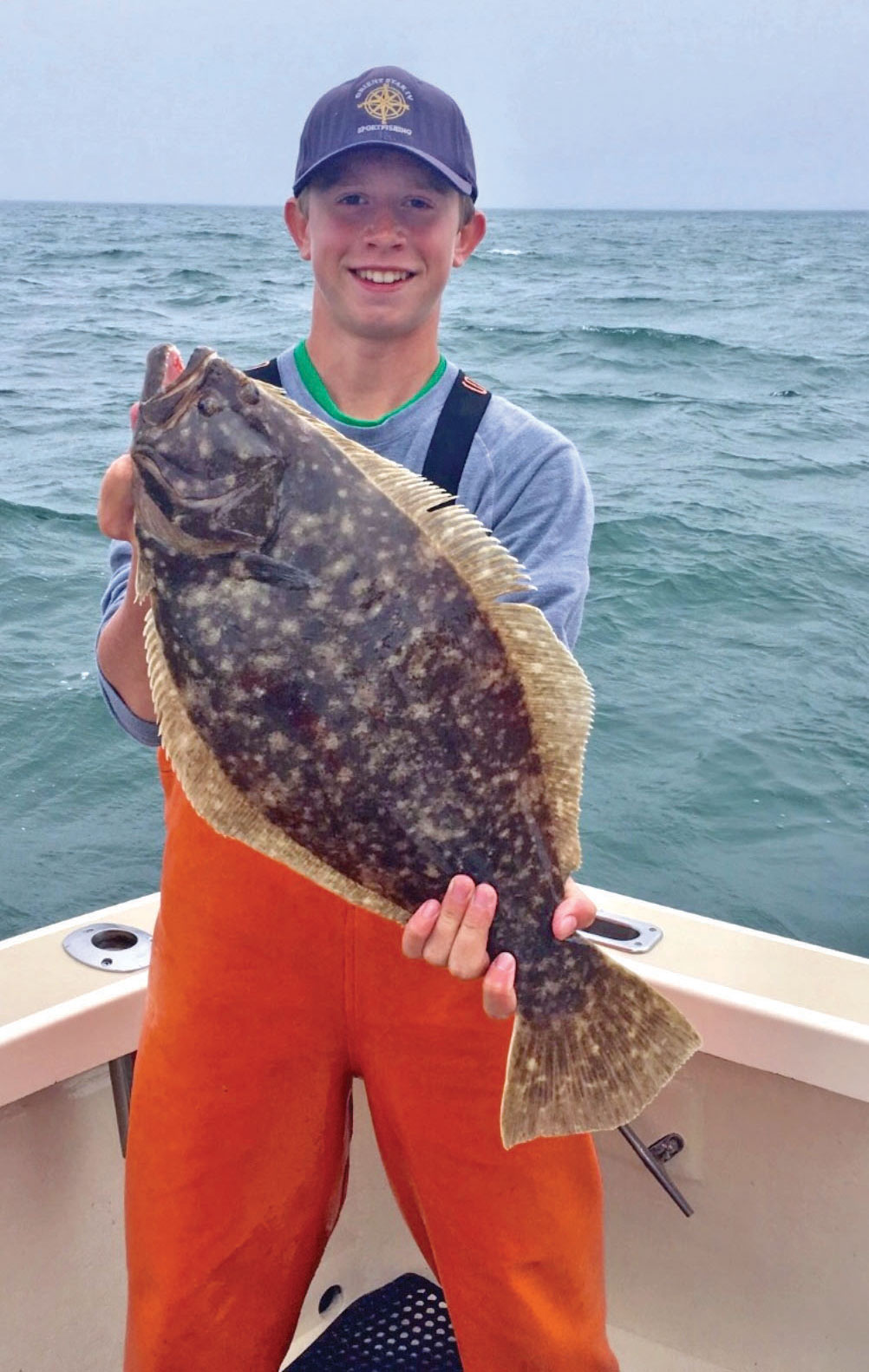
I’ve fished for fluke from many ports on Long Island. So, it’s safe to say that I know a thing or two about quality fluke fishing. In my opinion, some of the most productive and scenic areas to fish for fluke, especially large fluke, are the waters bordering the Island’s North Fork. This is especially true in May and into June. Each spring, these calm, protected waters surrounding Shelter and Gardiners islands become flush with an assortment of forage, including large numbers of squid. This concentration of bait draws fluke that are migrating inshore from their wintering grounds on the edge of the Continental Shelf.
Not Just Fluke
Be advised though, fluke are not the only target of North Fork anglers in spring. If you gear up properly and keep your eyes open for diving birds, a multitude of fishing options will be available for cabin feverish anglers starting in April. Bunker schools begin to show first, and school sized striped bass will be right behind them to take advantage of this forage. Recently, weakfish have made a nice comeback in this area, and are becoming a pretty reliable catch during the spring. Bluefish are never shy about following bait anywhere, and marauding schools of blues can be encountered anywhere from Plum Gut all the way to Jessup’s Neck. Finally, there are the porgies. These little scrappers flood the area by the first week of May, and for the next month or so huge porgies will swarm in these waters, feeding heavily as they take part in their annual spawn.
Jig a Bucktail

Even with all these angling opportunities, fluke are still number one on the wanted list of area anglers. Personally, I love to bucktail for big fluke, as I feel strongly that the rhythmic action of a jigging bucktail is a tough temptation for a hungry fluke to pass up. These North Fork waters and bucktailing for fluke go together like peanut butter and jelly. Helping to convince me of that was a day I was fishing with Capt. Bob Rocchetta of Rainbow Charters. It was a cool May morning, with very few boats on the water, and I was able to put two 10-pound fluke in the boat on successive drifts while jigging a bucktail. That right there was some quality fluking and cemented my confidence in bucktailing for fluke.
Most North Fork fluke fishing takes place in water ranging from 40 to 70 feet deep. The waters here are mostly protected by land masses, so rough conditions are not an issue, but the depths here are deeper than most inshore fluke anglers are accustomed to. A good fluke bite can turn on anywhere from the Greenport jetty, all the way to the Greenlawns, a popular area on the west side of Shelter Island. Currents here can be pretty strong, especially on moon tides, and 8 ounces of lead will at times be needed to work the bottom properly during a running tide. In my opinion, the best time to bucktail jig the area is when the drift speed allows for 2- to 6-ounce bucktails to keep contact with the bottom. I personally like bucktail jigs manufactured by Spro, S&S, and MagicTails, with white, yellow, and pink my favorite choices when it comes to color. If one wishes to jig for fluke when heavier jigs are needed, I’d then recommend going with fluke (bullets) chrome balls. I’ve used ball weights to 8 ounces with decent success here.
Add a Teaser
Jigs alone will catch fluke, but they are much more productive when a teaser hook is added 6 to 8 inches above the jig. I like to go very light with my terminal rigging when bucktailing the North Fork. This allows me to use lighter jigs because of less water resistance to my rig. My basic rig starts with 20-pound braid as my main line, connected to a 30-pound fluorocarbon leader for my tandem jigging rigs. This combination is on the light side and can get nicked up easily from big fluke or toothy bluefish so inspect rigs often and change when needed. You don’t want your rig to fail when that double digit doormat is alongside the boat.
My jigging rig starts by tying on a small barrel swivel to one end of my 4-foot, 30-pound fluorocarbon leader and to the terminal end I attach a medium sized snap swivel for ease of lure changing. I then bend the leader in half, and tie in a large dropper loop at its mid-point. This dropper loop is where the teaser and hook are attached. The fluke market for teasers has exploded the last 10 years or so, with some custom made by talented local tiers, and others massed produced by the likes of Tsunami Tackle. Every tackle shop on Long Island has rows of teasers to choose from, so when in doubt about the area’s hot teasers, ask the person behind the counter.
Whatever teaser one chooses it needs some type of scented attractant to work best. Almost every fluke angler now fishes with some variety of Berkley Gulp. My favorite Gulp baits are 4-inch grubs and Gulp Sand Eels. I tend to go with white/pearl and chartreuse colored Gulps. However, on the North Fork the color pink always seems to produce more often than any other part of the Island. I think the main reason Gulps work so well is because they stay on the hook better than strip baits or spearing when fluke are chomping down on them. That being said, pay attention throughout the day, as sometimes Gulp is working best, and sometimes the fish want natural baits. Don’t hesitate to switch things up to stay on the bite.
Natural Baits

As far as natural baits, I prefer to tip the hook on my jig and teaser with combos of spearing and fresh strips from locally caught squid. Strips from fresh caught bluefish and sea robins will also work well. Keep any strips baits thin and to about 4 inches in length. The reason to stay short with the strips when fluke jigging is that a long strip (6 inches or longer) will often wrap around the hook because of the jigging action the angler is imparting to the rig. Once wrapped on the hook the enticing fluttering action of the strip is lost. In addition, the strip bait winds up covering the hook point, which results in missed bites. Understand that you may get one chance at that big doormat and you don’t want that encounter to end poorly because your strip bait prevented a good hook set.
Keep in mind, it’s important that baits always look natural when drifting through the water. If the bait spins on the drift, your catch rate will suffer. I recommend trimming meat off any strip baits in order to make sure the bait drifts nice and straight in the current. Never bunch up the bait on the hook and inspect the bait often. The bay bottom off the North Fork will often be muddy; if the bait becomes silted up or mud stained, put on a fresh one. Bucktails work best when the jig is straight up and down from boat to bay bottom. Minimal scope in the main line should always be the goal. Touch the bottom with the jig and work it along the bottom with small hops. Upon feeling a bite set the hook immediately. Fluke hooked on the higher teaser will give a nice wallop on the rod tip because the fluke will immediately dart back to safety on the bottom. Fluke that pounce on the bucktail will feel more like a dead weight; I set the hook immediately on this sensation too, and many times I’ll hook these fluke on the white side of the body as it was “sitting” on the bucktail.
Access to the North Fork is easy for all anglers. There is a pay to use ramp located at Orient by The Sea Restaurant and Marina that is a short run to all the North Fork fluke fishing honey holes.
There are also many professional captains that run party and charter boats from Greenport and Orient Point. The professional captains and mates who ply these North Fork waters daily want you to catch fish. So, when aboard their fine vessels, don’t be afraid to ask for assistance if you are having a difficult time hooking up. Crews will happily check out your gear, rigging, and bait presentation to make sure all is up to snuff.



